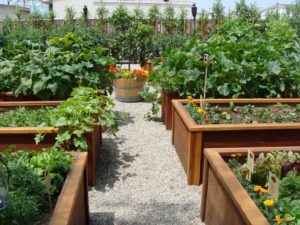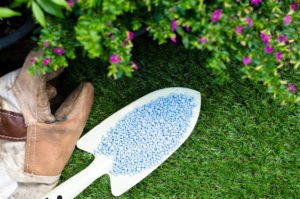We all had a chance to admire the smooth patches with neat fences. Someone already made such in the garden, and someone else only dreams about it. I propose to discuss the theme of fences for beds and share experiences: who and how they were built, are you satisfied with the solution found, how convenient it is to cultivate the soil on such beds and so on.
Why?
The first question: why do we need fences? Beauty-it is clear, but is there a practical benefit? Eat.
First, there is less hassle with weeds: the area available to them is significantly reduced, so weeding will decrease. And if the bumpers are buried in the ground, then the weeds will penetrate less to the treated soil from the outside.
Secondly, the garden does not crumble. This is not true for all — who have a dense soil, well-kept in shape, those of this advantage may not appreciate. But on the loose sandy and sandy loam soils, where the bed and tries to crumble, strengthening its edges bumpers — quite a practical solution.

From what?
As we have seen, the reasons for such a “garden town” enough. Then the following question arises: what is better to do fencing? I found a lot of options, I hope someone will offer more.
Slate
Once one of the most common materials for fencing ridges, slate and still often used by gardeners.

Pros: availability (usually used old slate, removed when replacing the roof, so the material is actually free).
Cons: over time, began to appear information that these materials are not particularly environmentally friendly, can emit harmful substances to humans. In addition, the slate is quite fragile, it is easy to split, especially when it is not new. Now this is gradually fading out of use: in place of the slate has come other materials.
Tree
In regions where wood is available — it is a very popular material. Suitable for any kind: from the hunchback to the lining, from the fence to the timber — usually it is only a matter of cost, which you are ready to go.

Here, for example, which I came across on the Internet the option of fencing for vegetable garden with timber:

Not the cheapest solution, but strong and beautiful. Again, it is practical: on a fairly wide side you can put pots with seedlings, for example, or even sit down to make the weeding more convenient.
And here is the idea of the box-railing :

It turns out carefully and elegantly, and in fact the material can be used actually throw! Well, you can take the usual boards. Fix on the corners for strength; if the bed is long and the boards are not too thick, it is necessary to put additional supports to the pressure of the ground sides are not bent.

Advantages of wooden fences: it is inexpensive and easy.
Cons: the tree is short-lived. However, this drawback can be overcome if you use means for impregnation of wood, which prevent its decay, even in contact with the soil.
Metal fence
As a rule, they are made of galvanized steel, sometimes with a polymer coating. Beautiful, neat, easy to mount, will serve almost forever. The only drawback-the pleasure is not cheap. You can buy ready-made fencing, about here are:

But this beauty will cost a decent amount. On the one hand, time spent and forgotten for many years. On the other hand, not everyone can afford. However, if there are craftsmen in the family, you can not spend money on finished products. “Handy” the owner will not be difficult to build a metal box, using roofing iron and metal corner or a frame of wooden bars.

However, there is another caveat to such a fence: the metal is well heated in the sun; accordingly, the soil will be heated. Some polymer coatings can reduce this property, but is it possible to get rid of it completely?
Stone and concrete
These materials are used for decoration of beds is extremely rare, but admire what beauty you can create with them:

Expensive and time-consuming, of course. But spectacular! And certainly one for the ages. And in this frame, even the banal parsley or dill look elegant.
In the photo-a high bed. A more economical option when framed vegetable garden becomes paved path. Only in this case, the bed should be done level with it and set a small border, so that the soil in the rains and irrigation is not washed out on the track.

Border tape
Option that is spreading more and more and is used not only for flower beds, as it was originally, but also for the beds.

Pros: curb tape is easy to buy (sold, probably, in any garden store), it is easy to install, it will last long enough (provided good quality: some types of plastic, from which the tape is made, can not withstand the cold), the bed can be made of any shape.
Cons: high quality and durable curb tape is not cheap, and cheap options are not durable.
An important nuance: if you use a border tape as a fence for the garden, it is desirable to place at regular intervals strong pegs-supports, so that under the pressure of the soil the fence does not deform.






